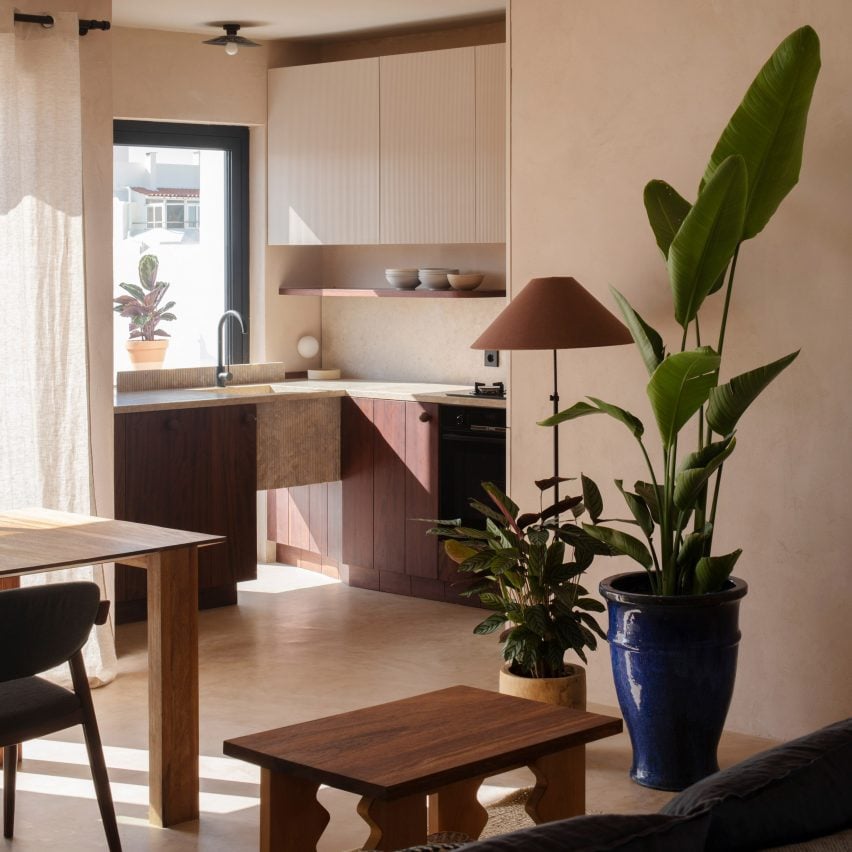
Studio Gameiro has designed the interior of the Arriba apartment in the coastal town of Caparica, Portugal, using local stone and drawing on wooden fishing huts for inspiration.
The fit-out of the two-bedroom apartment, located inside a building from the 1980s, was designed to reference the coastal area of Caparica.
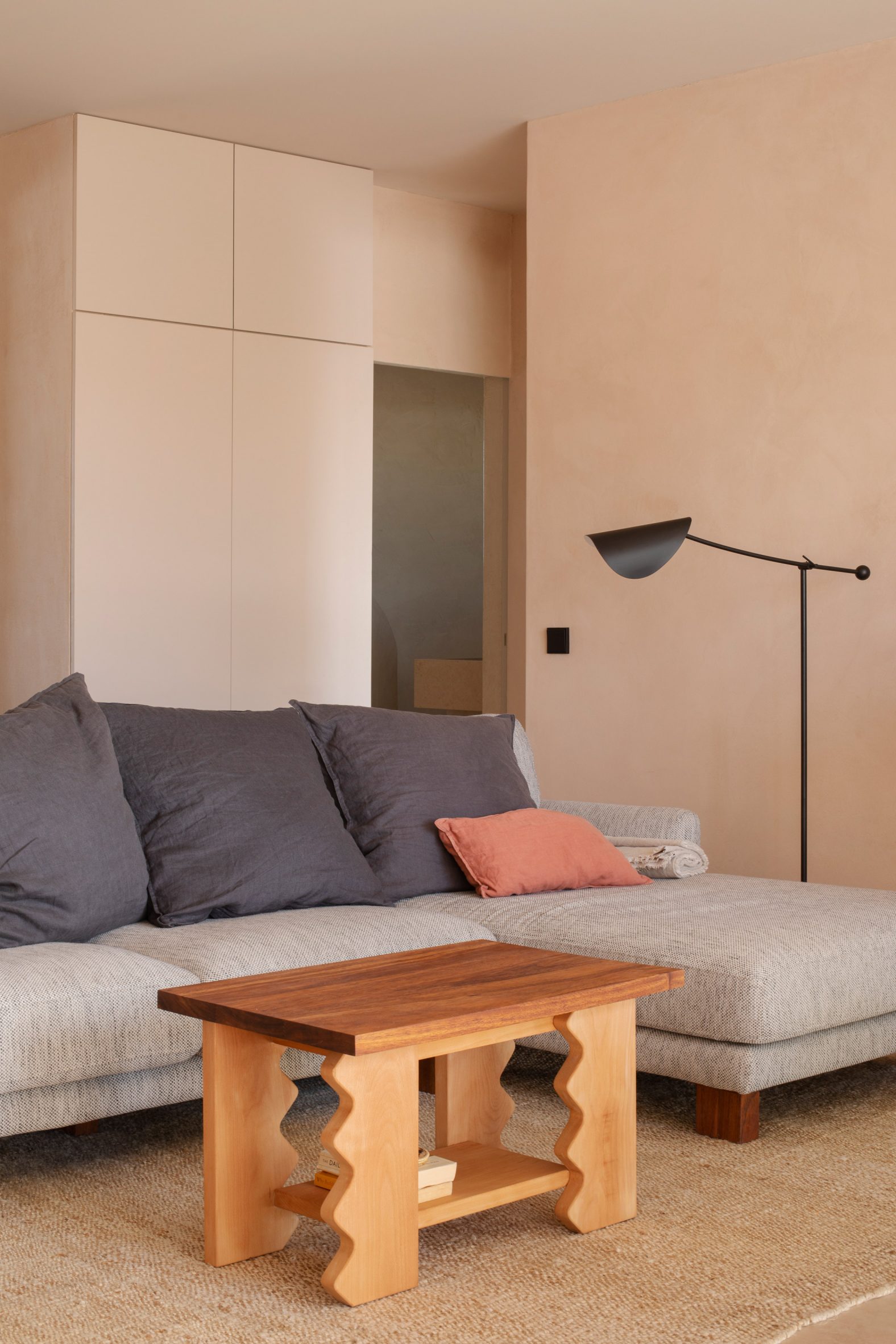
“The interior colour palette and texture was inspired by the beautiful coastline of Caparica, a unique fossil-rock formation along the coast with sandy and terracotta hues,” studio founder Joāo Gameiro told Dezeen.
“This natural and protected area south of Lisbon has a particular and playful way of changing with light, and it is also almost poetically embedded in our childhood memories of long summer holidays, as it was the first seaside area close to the big city.”
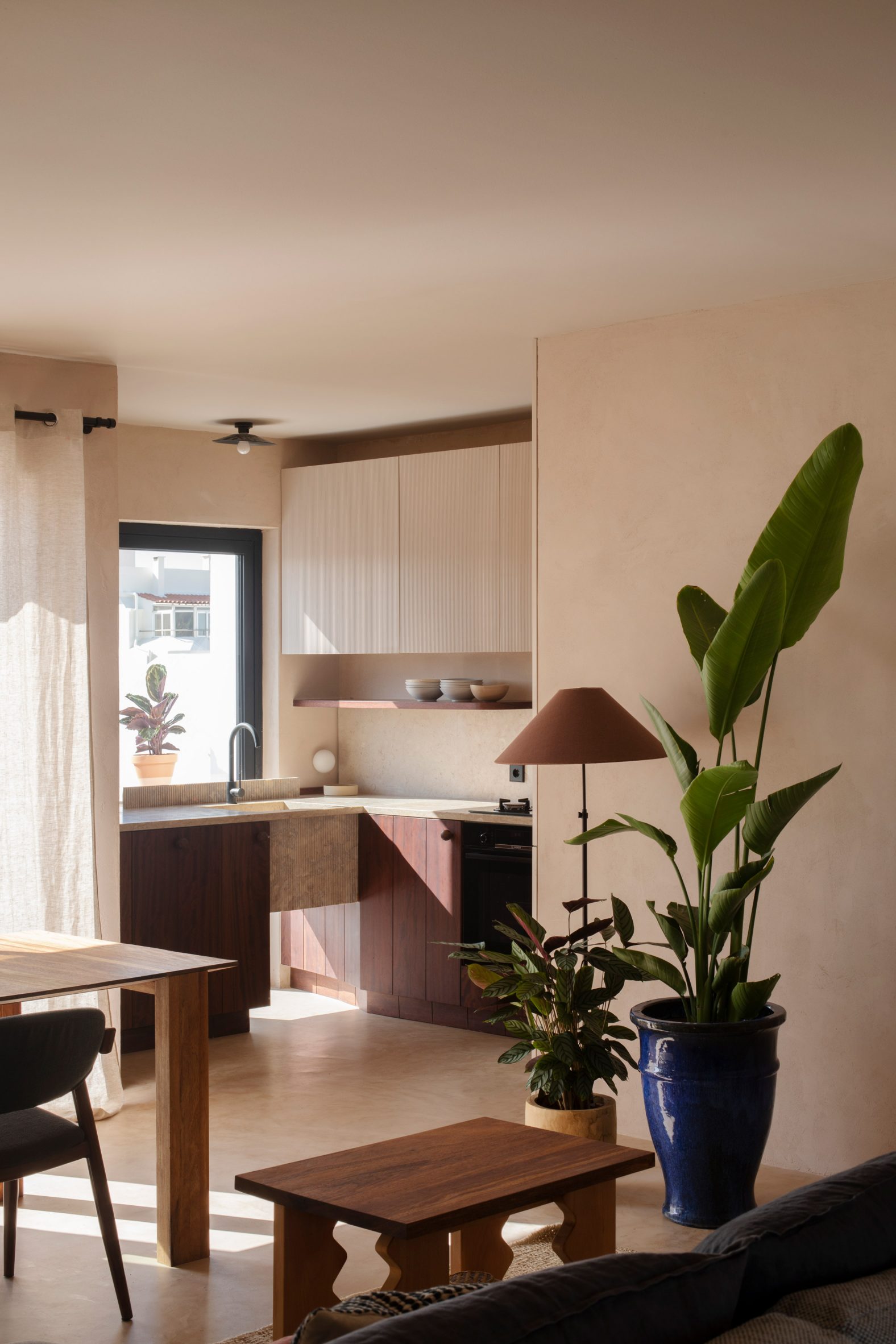
The sandy hues of the Caparica cliffs influenced the colour palette of the apartment, which is filled with beige and tan hues and named Arriba for the Portuguese word for cliff.
Studio Gameiro also referenced the 70-square-metre apartment’s surroundings through its choice of materials, designing wooden kitchen cabinets in a nod to local fishing boats.
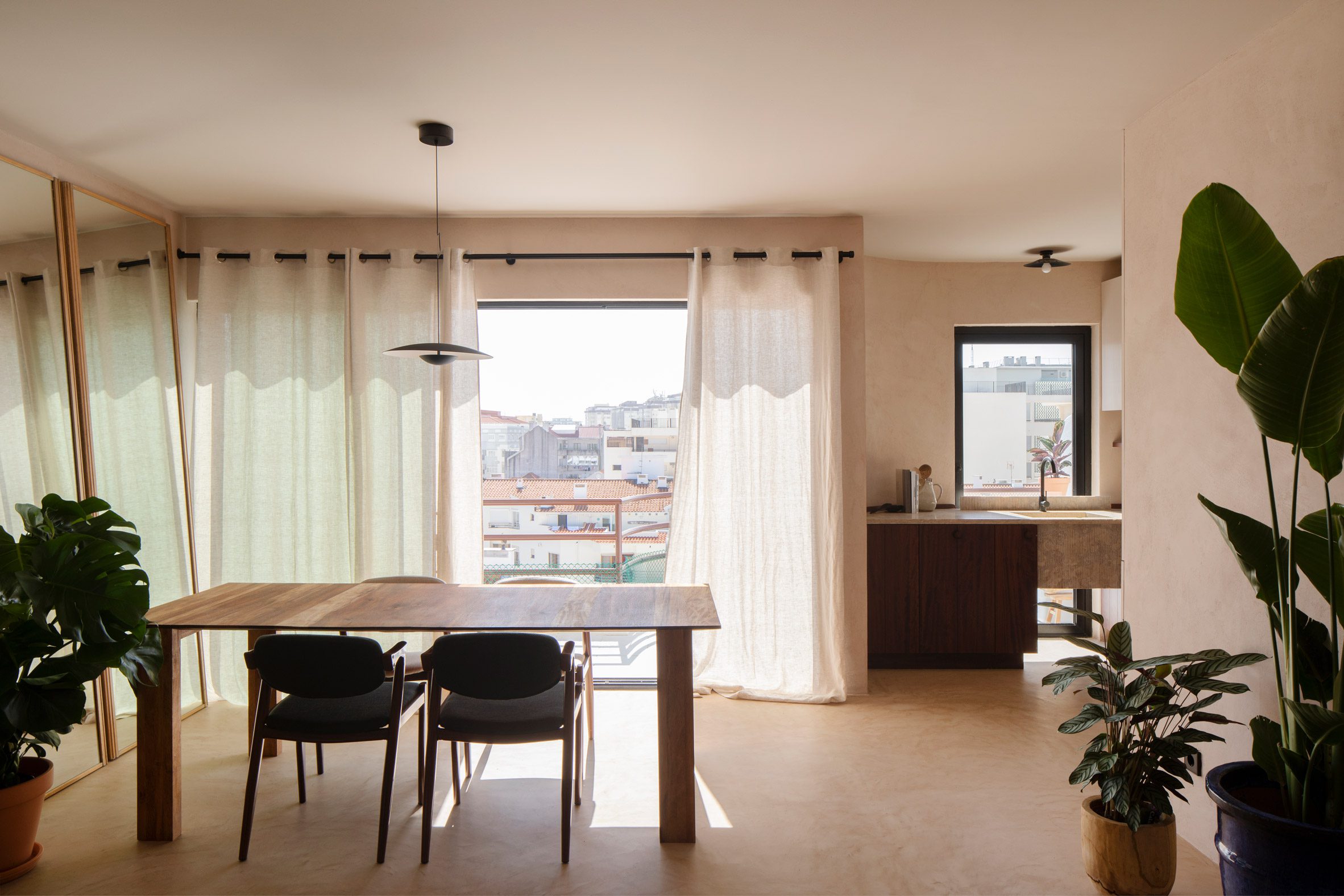
“The use of wood for the low kitchen cabinets relates to the [area’s] fishing huts, which are characterised by vertical or horizontal lines of wooden planks,” Gameiro said.
“The texture found in the upper cabinets also finds inspiration in the same source, resembling the straw utilized in the construction of these huts.”
As with its interior scheme for the Austa restaurant in Almancil, the practice designed much of the furniture for the apartment, which it made from wood.
“Following the same input as in other Studio Gameiro projects, we always tend to design bespoke furniture as an extension of the ability to manipulate textures and materials and celebrate the craftsmanship we are very fortunate to work with,” Gameiro explained.
“The use of Kambala wood was important, as a reference to the durable wood used at the fabrication of the fishing boats, for example.”
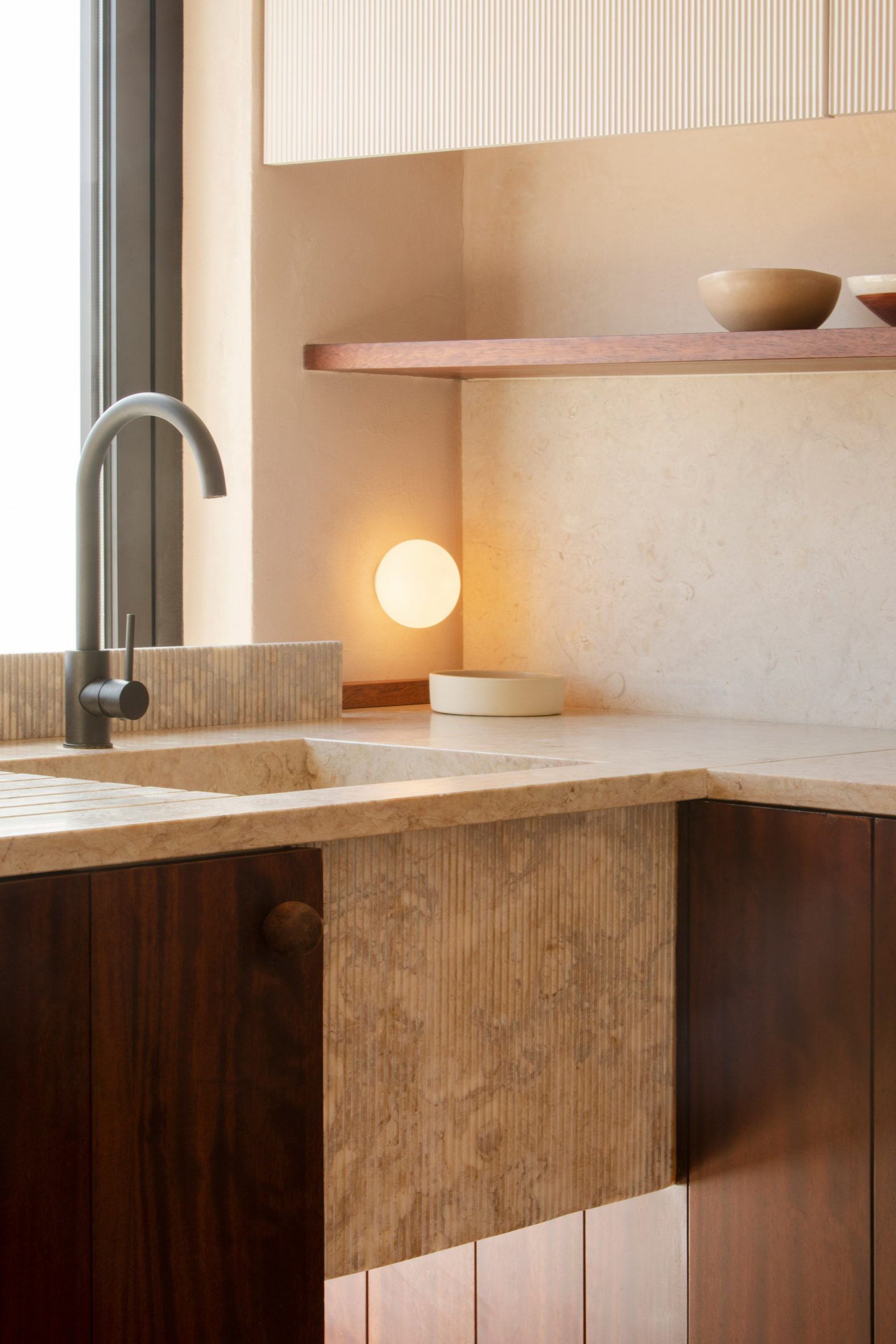
In the kitchen, the studio added an L-shaped kitchen counter made from marble.
“We used Lioz marble, a type of stone extracted locally that has been used in kitchen counters for centuries due to its hard and extremely resistant surface,” Gameiro said. “We also loved how it resonated with the sandy and terracotta hues of the hills nearby.”
The apartment features an unusual bathroom, organised around a shower base that was designed to have an organic shape reminiscent of “shapes found on the beach”, the studio said.
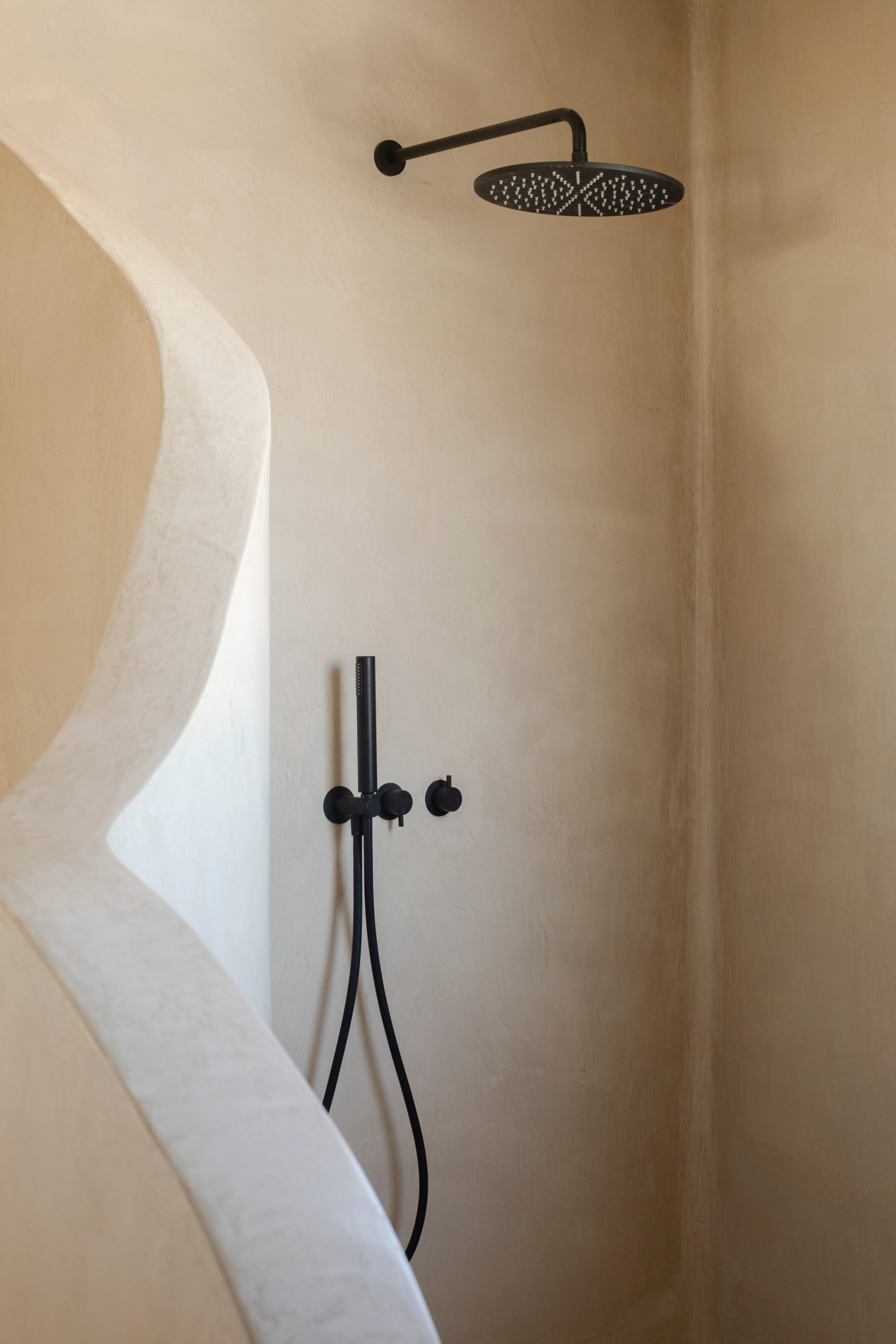
It was made from Moleanos stone – a type of Portuguese limestone set with the remains of sea shells – and was inspired by the coastal erosion that has affected the area.
“As in most of these coastal formations, it has previously suffered from erosion, which in this case was eventually stopped by the pro-active planting of the Caparica pine forest,” Gameiro said.
“This is now considered a natural protected area and what is left is a coastal outline of ins and outs to and from the beach, which inspired the organic shape of the shower wall.”
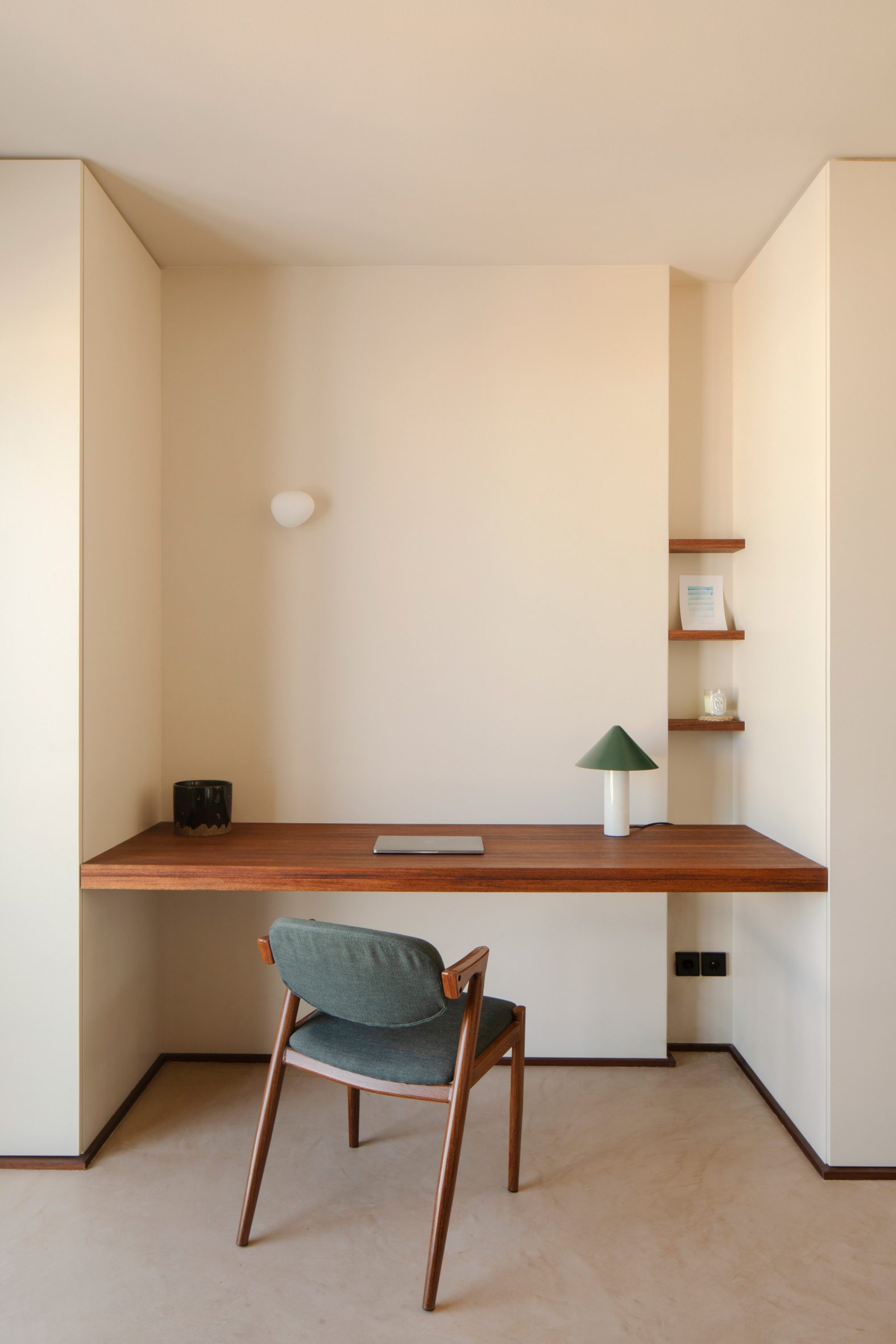
In the study, the studio added a bespoke desk and wooden shelving, while the bedroom has a custom-made make-up desk and a bespoke wooden bed.
Other recent Portuguese interior design projects featured on Dezeen include a Lisbon home by Fala Atelier and a boutique hotel by designer Christian Louboutin.
The photography is by Tiago Casanova.
The post Studio Gameiro draws on hues of Caparica cliffs for Arriba apartment appeared first on Dezeen.
www.dezeen.com










